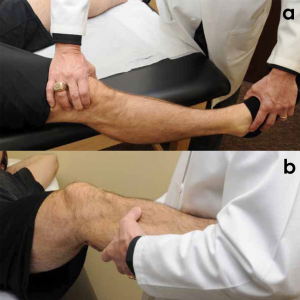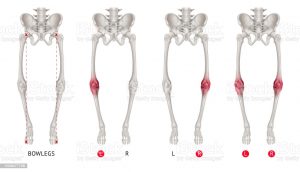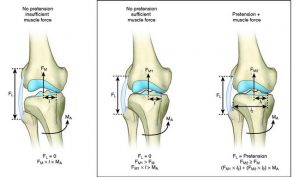Knee varus is one of the more common deformities of the lower extremities. Variations of knee angulation caused by various causes can lead to knee varus deformity. The patient’s lower limb weight-bearing state and force line changes, and the abnormal walking gait will inevitably cause the increase of the load on the knee joint, which will lead to the damage of the articular cartilage and cause degenerative changes in the knee joint. Eventually, it will lead to joint stiffness and walking dysfunction, which will seriously reduce the patient’s quality of life. Therefore, the timely diagnosis and treatment of knee varus are of great significance for the maintenance of the patient’s walking function and the improvement of the quality of life.
During the normal development of human beings, the fetus and neonatal period mostly show mild to moderate knee varus, which is related to the posture of the fetus in the mother’s body. This situation will be gradually corrected with growth and development. Developmental knee valgus appears, and after another 2 years, it continues to transition to a relatively “mature” anatomical line of force and reaches a normal state at about 6 years old. Patients who are more than 2 years old should actively look for pathogenic factors when they have knee varus.

Many diseases can cause knee varus, mainly in the following aspects:
1. Diseases affecting endocrine and metabolism, such diseases are represented by rickets.
2. Diseases that directly cause bone and joint destruction, including trauma, inflammation, tumors, etc. of the lower limbs. Diseases directly cause bone destruction, cause bone deformities, or damage the epiphyseal plate, resulting in asymmetric bone growth, leading to knee varus happen.
3. Diseases that affect the development of cartilage and connective tissue, such as osteogenesis imperfecta, multiple epiphyseal dysplasias, etc. These diseases are mostly hereditary diseases, and disease-causing genes cause collagen, cartilage, and other connective tissue formation disorders, which affect bone formation or Development, ultimately manifested as abnormal bone growth and morphology.
4. Neuromuscular disease, sequelae of poliomyelitis, sequelae of cerebral palsy, neuromuscular injury, etc. The disease causes spasms of the inversion muscles or relaxation of the valgus muscles, resulting in abnormal skeletal force, and the long-term existence of unbalanced muscle strength, Causing abnormal development of bones.
5. Degenerative bone and joint disease, osteoarthritis, is a kind of degenerative change and injury of articular cartilage, which gradually leads to the damage and proliferation of bone on both sides of the joint, and the joint space also changes, which eventually causes the entire lower limb to stand up. The line changes, causing the knees to turn in and out. At the same time, the formation of knee varus will further accelerate the progress of osteoarthritis.

The patient’s clinical manifestations are more typical, manifested as the abnormal appearance of the lower limbs or walking gait. When the patient walks, the lower limbs can be seen to show “O” or “X” shape changes.
Since there are many causes of knee varus, the design of the treatment plan should focus on the whole, based on the comprehensive consideration of the patient’s age, predisposing factors, soft tissue, and joint conditions, and the degree of deformity, and individualized treatment for the patient.
How to treat knee varus
First, the primary disease should be actively corrected: correct the active endocrine and metabolic diseases as soon as possible, improve the nutrition and metabolism of bones, promote the physiological development of bones, enhance bone strength and the ability to resist external stress; inflammation, tumors, and early epiphyses Disorders such as dysplasia and neuromuscular disease that can continue to cause knee varus changes should be eliminated before correction of knee varus, otherwise, the knee varus will inevitably be repeated after corrective treatment, leading to treatment failure.
Generally speaking, children aged 2 to 4 years tend to self-correction of knee varus, and conservative treatment measures can be taken and regular review and observation of changes in the condition.
For patients over 4 years of age who have not closed the epiphyses, the possibility of self-correction of knee varus and valgus deformity is very small. Surgical intervention should be considered. The ultimate goal of surgery is to restore the normal weight-bearing line of the lower limbs. Selective semiepiphyseal block is a safe and effective treatment for children with knee varus.

For knee varus patients with severe osteoarthritis, especially elderly patients, joint replacement is currently the more mainstream treatment.
For the vast majority of patients, the osteotomy is one of the effective means to restore the force line of the affected limb.
Traditional osteotomy and orthopedic surgery often adopt internal fixation or external fixation with plaster. The biggest disadvantage is that the correction of the deformity is placed in one operation. It is difficult to accurately control the position and angle of the osteotomy during the operation, and it is prone to incomplete correction of the deformity. And the situation of overcorrection often results in recurrence of deformities or the appearance of new deformities after surgery.
The use of an adjustable external fixator (Ilizarov technology) solves this problem well. The advantage of external fixation over internal fixation is the adjustability of the correct direction and angle after the operation. The deformity can be gradually corrected by slow and continuous traction after the operation, and early weight-bearing can promote the healing of the osteotomy. However, when placing the external fixator, it should be noted that the center of the hinge should be aligned with the position of the osteotomy. For patients with osteoarthritis, the knee joint can be stretched through a fixed cross-joint stretch to achieve better results.
Hot blogs:
The Easiest Custom Insoles: Heat Moldable Insoles
Custom insoles, also known as orthotic insoles, are designed to provide personalized support and comfort for individuals with various foot conditions. In [...]
Children’s Insole Size Conversion Chart
The standard sizes for shoe insoles may vary from country to country, making it a headache to choose the right insole for [...]
Do custom orthotics need to be made by a doctor personally?
Custom orthotics do not necessarily need to be made by a doctor personally. While doctors, specifically podiatrists or orthopedic specialists, are often [...]
Do NBA players use custom insoles?
Custom insoles are not only helpful for people with foot health issues, but they also play a significant role in targeting the [...]
